Nestled in the heart of Abu Dhabi, the Sheikh Zayed Grand Mosque is not just a profound place of worship but a striking emblem of architectural ingenuity. This grand edifice, named after the founder and first President of the United Arab Emirates, Sheikh Zayed bin Sultan Al Nahyan, serves as a bridge between the timeless artistry of Islamic architecture and the aspirations of the modern world. The mosque’s design, a blend of ancient and new, invites both worshippers and tourists alike to bask in its serene and spiritually uplifting environment. From its pristine white façade to the intricate floral motifs that adorn its expansive interiors, every aspect of the Sheikh Zayed Mosque Design speaks of a meticulous attention to detail and a profound reverence for the divine.
Historical Context
Origins and Inspirations
The idea for the Sheikh Zayed Grand Mosque was first envisioned by Sheikh Zayed bin Sultan Al Nahyan, who aimed to create a structure that would symbolize the cultural diversity and technological achievements of the Arab world. Construction began in 1996 and was completed over a span of 11 years, culminating in 2007. The design and construction drew on the talents and materials from around the world, reflecting Sheikh Zayed’s vision of unity and cooperation.
The Sheikh Zayed Mosque Design was inspired by both the architectural traditions of Morocco, Persia, and the Mughal Empire, as well as by contemporary design elements that could anchor the mosque in the present day. This blend of past and present in the design aims to communicate a message of timelessness and continuity, key aspects of Sheikh Zayed’s philosophy. He envisaged the mosque as a beacon of knowledge and tolerance, a place that welcomes everyone, regardless of their background, to appreciate the beauty of Islamic art and architecture and to learn about the rich heritage of the region.
Sheikh Zayed Mosque Design
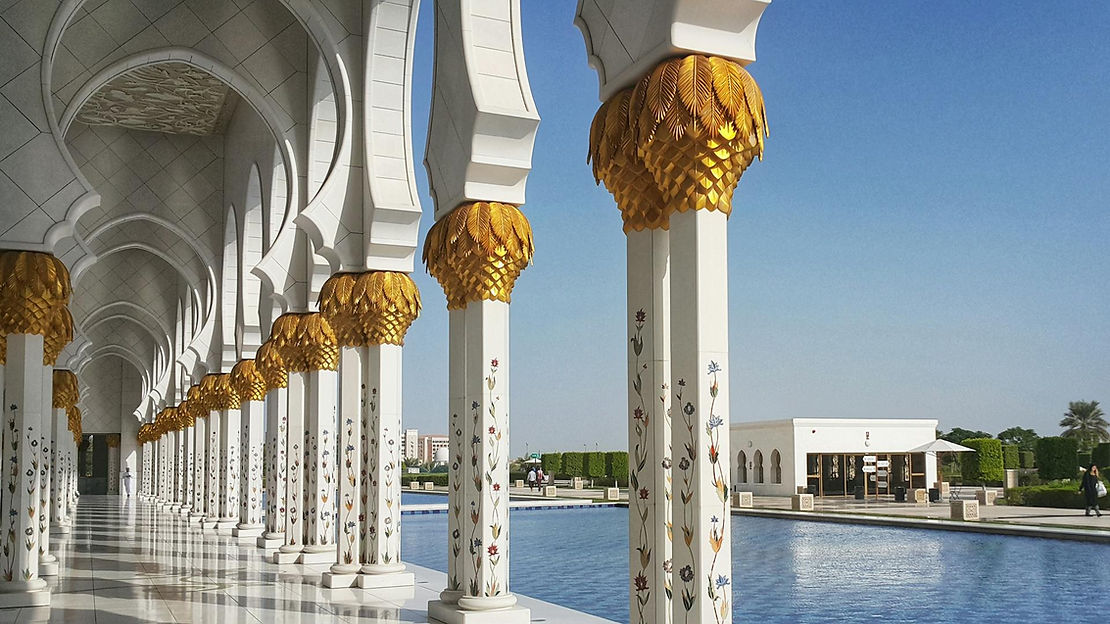
Unique Design Elements
The Sheikh Zayed Mosque Design stands out for its intricate blending of diverse architectural styles, creating a harmonious and inviting space. The mosque’s structure is predominantly influenced by Mughal and Moorish mosque architecture, yet it incorporates modern materials and technology, making it a masterpiece of contemporary Islamic architecture. Its 82 domes of varying sizes contribute to a breathtaking skyline, each adorned with white marble that shines under the Abu Dhabi sun.
Materials Used
The materials chosen for the mosque not only reflect beauty and durability but also international cooperation. The design utilises natural materials such as marble, gold, semi-precious stones, crystals, and ceramics. Over 100,000 tons of pure white Greek and Macedonian marble were used in the construction, which were intricately inlaid with precious stones including amethyst, lapis lazuli, red agate, abalone shell, and mother of pearl, showcasing meticulous craftsmanship and attention to detail in every aspect of the Sheikh Zayed Mosque Design.
Influences and Inspiration
Islamic Architectural Influence
At its core, the design of Sheikh Zayed Grand Mosque draws heavily from Islamic architectural traditions, which emphasize symmetry, geometric patterns, and the use of water features which evoke the gardens of paradise as described in Islamic scripture. These elements are not only visually stunning but also serve to enhance the spiritual atmosphere, allowing those who visit a sense of peace and contemplation.
Global Influences
Sheikh Zayed’s vision was for the mosque to be a place that reflects the global and inclusive nature of the UAE. This vision is evident in the design elements borrowed from different Islamic civilizations. For instance, the mosque’s minarets blend Mameluke, Ottoman, and Fatimid styles, which not only enrich the design but also symbolize the unity and diversity within the Islamic world. Furthermore, the mosque incorporates contemporary design technologies, such as the lighting system that reflects the phases of the moon, creating a dynamic exterior that changes from white to blue with the lunar cycle.
Interior Design
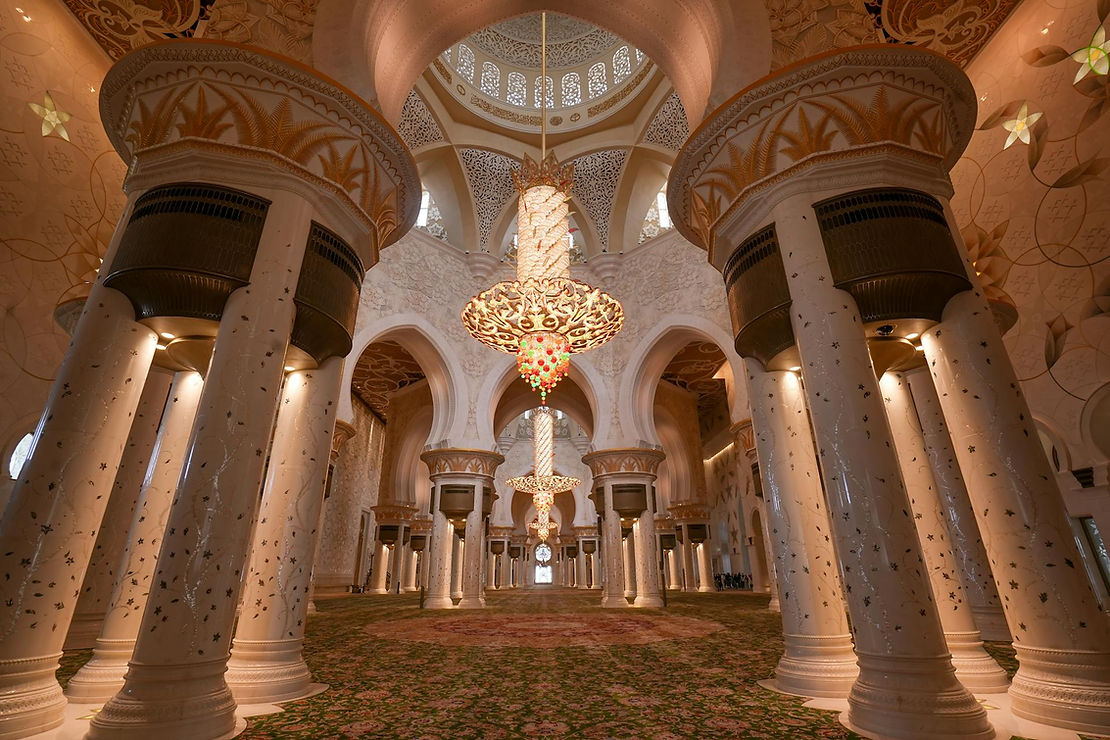
Artistic Details Inside
The interior of the Sheikh Zayed Grand Mosque is a testament to extraordinary craftsmanship and attention to detail. The vast prayer hall features one of the world’s largest hand-knotted carpets, crafted by over 1,200 artisans in Iran, a significant feature of the Sheikh Zayed Mosque Design. Above, the 12-ton chandelier—adorned with millions of Swarovski crystals—hangs majestically, reflecting Islamic artistry through modern materials. The walls are lined with beautiful mosaics and intricate calligraphy, featuring verses from the Quran, all of which enhance the spiritual ambiance.
Importance of Calligraphy
Calligraphy in Islamic culture represents the divine word, and the mosque exhibits this art form with grandeur and reverence. Master calligraphers from around the world contributed to the Sheikh Zayed Mosque Design, creating stunning panels and inscriptions that not only decorate but also convey messages of peace and spirituality.
Exterior Features
Minarets and Domes
Externally, the Sheikh Zayed Grand Mosque features four minarets standing at over 100 meters each, which blend Mameluke, Ottoman, and Fatimid architectural styles, reflecting a rich cultural heritage. The mosque boasts 82 domes, each clad in white marble and featuring intricate lattice work, contributing to its iconic skyline. These domes are not just architectural feats but also carry deep symbolic meanings, crowned with crescent moons, a traditional Islamic symbol.
Courtyards and Gardens
The expansive outer courtyards feature reflective pools that enhance the mosque’s tranquil and contemplative atmosphere, embodying traditional Islamic garden landscapes. These water features are surrounded by lush gardens and walkways, all carefully designed to complement the overall Sheikh Zayed Mosque Design, promoting a serene environment that invites reflection and community gathering.
Cultural Significance
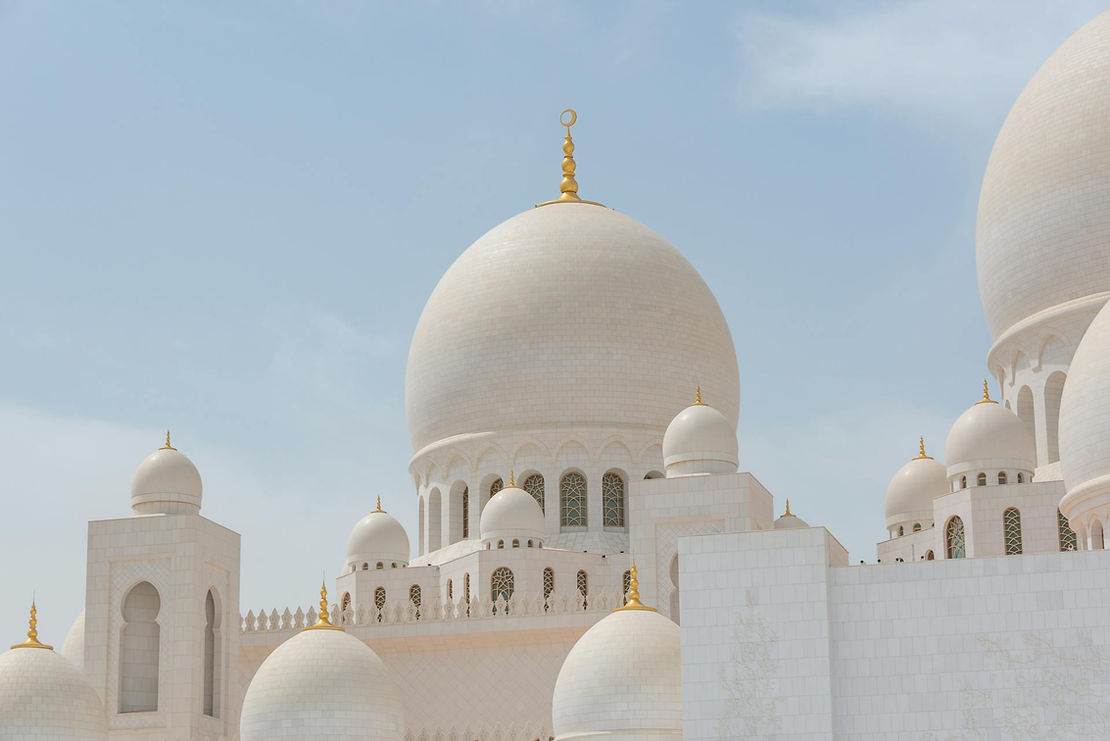
Role as a Cultural Icon
The Sheikh Zayed Grand Mosque serves as more than just a place of worship; it stands as a cultural beacon in the United Arab Emirates, symbolising the progressive spirit and unity of the nation. The design of the mosque, influenced by diverse Islamic civilizations, promotes a message of inclusivity and tolerance, resonating with visitors from all over the world. The Sheikh Zayed Mosque Design thereby reflects Sheikh Zayed’s vision of bridging cultural gaps and fostering dialogue among different communities.
Symbolism in Design
Every element of the mosque’s design carries deep symbolic meaning, from the columns that signify the strength and support of the community to the gardens that represent paradise. The mosque is designed to be a physical manifestation of spiritual beliefs and a mirror of the cosmic world, aligning with the principles of harmony and balance in the universe.
Construction Details
Techniques and Challenges
Constructing the Sheikh Zayed Grand Mosque was a monumental task, requiring advanced engineering techniques and international collaboration. Over 3,000 workers from 38 contracting companies globally brought the Sheikh Zayed Mosque Design to life, utilizing state-of-the-art technology to ensure precision and harmony in the vast structure.
Innovations in Construction
Innovative approaches were essential for the completion of the mosque, especially given its size and the complexity of its designs. The use of modern construction materials and methods allowed for the creation of the mosque’s large domes and soaring minarets while maintaining the aesthetic integrity of traditional Islamic architecture. This blend of innovation and tradition in the construction process underscores the mosque’s role as a symbol of modern Islamic identity.
Visitor Experience

Tourist Attraction Aspects
The Sheikh Zayed Grand Mosque is not only a pivotal place of worship but also one of Abu Dhabi’s most visited tourist attractions. Its design caters to visitors from all walks of life, offering guided tours that explain the Sheikh Zayed Mosque Design and the Islamic principles it embodies. The mosque’s vast scale, accommodating over 40,000 worshippers and visitors, the reflective pools that line the entrance, and the open invitation to people of all faiths reflect Sheikh Zayed’s vision of unity and peace through understanding.
Spiritual Experience for Visitors
Visitors often describe their experience at the mosque as profoundly spiritual and enlightening. The serene ambience, the beauty of the calligraphy, the intricate floral designs, and the sweeping archways all contribute to a sense of peace and transcendence. The Sheikh Zayed Mosque Design ensures that the spiritual message of Islam resonates deeply with those who walk through its doors, promoting a message of harmony and spirituality.
Sustainability Aspects
Energy Efficiency and Sustainable Practices
In line with global sustainability trends, the Sheikh Zayed Grand Mosque incorporates several eco-friendly practices in its design and maintenance. Energy-efficient lighting, water-saving fixtures, and the use of sustainable materials help minimize the environmental footprint of this massive structure. The cooling system is particularly innovative, designed to handle the extreme temperatures of the region while reducing energy consumption.
Ongoing Conservation Efforts
The management of the Sheikh Zayed Grand Mosque places a high priority on conservation and maintenance. Regular upkeep and advanced preservation techniques ensure that the beauty and integrity of the mosque are maintained for future generations. This commitment to sustainability is an integral part of the Sheikh Zayed Mosque Design, reflecting the foresight and responsibility towards environmental stewardship.
Impact on Modern Architecture
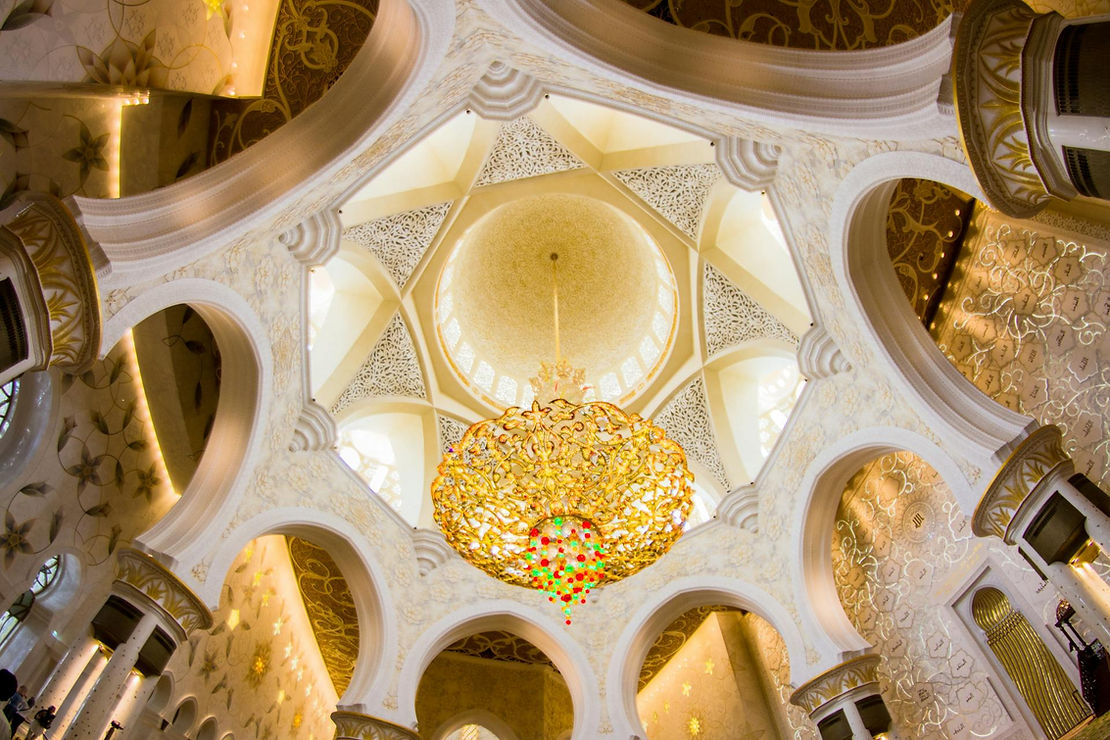
Influence on Contemporary Islamic Architecture
The Sheikh Zayed Grand Mosque has set a benchmark in the field of modern Islamic architecture, influencing numerous projects around the world. Its harmonious blend of traditional motifs and modern design principles has inspired architects and designers to explore new interpretations of Islamic aesthetics in contemporary structures. The Sheikh Zayed Mosque Design showcases how traditional elements can be seamlessly integrated with modern technology and materials to create stunning, innovative spaces that respect historical roots while looking forward to the future.
Comparative Analysis
Comparing the Sheikh Zayed Mosque Design to other iconic mosques, such as the Sultan Ahmed Mosque in Istanbul or the Hassan II Mosque in Casablanca, highlights its unique contribution to Islamic architecture. While each mosque has its distinctive style and historical context, the Sheikh Zayed Mosque stands out for its scale, the technological innovations in its construction, and its open approach to engaging with the global community.
Preservation and Maintenance
Ongoing Conservation Efforts
The preservation of the Sheikh Zayed Grand Mosque is a critical aspect of its management. Given the mosque’s prominence and the harsh environmental conditions of its location, specialized teams are dedicated to the continuous care of its physical and aesthetic elements. This includes the regular cleaning and restoration of marble surfaces, the maintenance of its interior artworks, and the technological updates to its lighting and cooling systems.
Future Challenges and Solutions
Looking ahead, the challenges of preserving the Sheikh Zayed Mosque Design will involve adapting to the evolving needs of a growing visitor population and the increasing environmental stresses due to climate change. Future solutions may include more advanced sustainability practices, such as the integration of solar energy technologies and further improvements in water and energy efficiency, ensuring that the mosque continues to be an example of sustainable development in architecture.
Conclusion
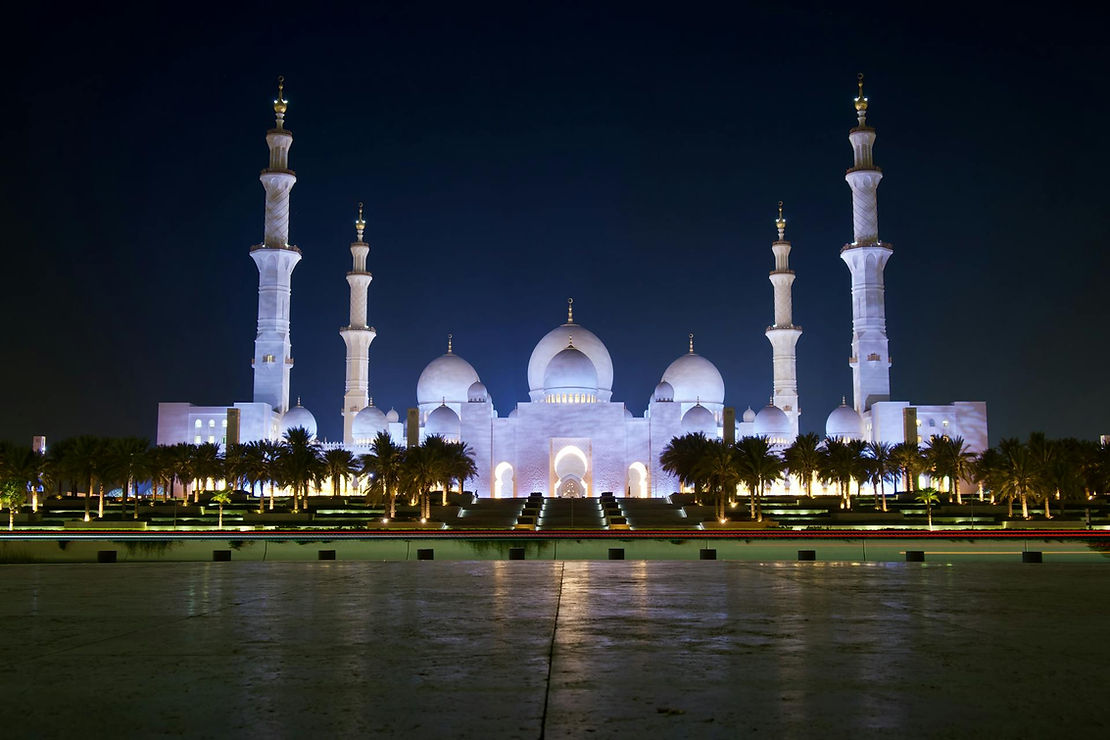
The Sheikh Zayed Grand Mosque stands as a monumental testament to the vision of its namesake, Sheikh Zayed bin Sultan Al Nahyan, and the rich tapestry of Islamic art and culture. With its blend of traditional Islamic architecture and modern design elements, the Sheikh Zayed Mosque Design not only honors the past but also embraces the future, making it a pivotal landmark in the global cultural landscape. As a place of worship, a tourist attraction, and an educational center, it continues to foster a message of unity and peace, welcoming all who visit to experience its splendor and spiritual resonance.
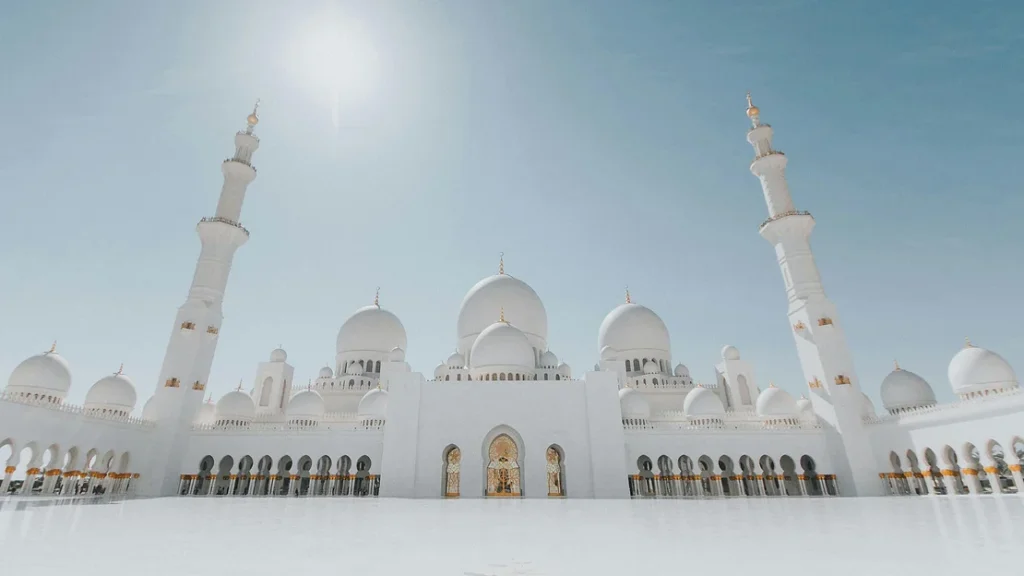
Recent Posts
15 Floor Plan Graphic Styles That Will Elevate Your Presentation Game
The Role of Shadows in Architectural Storytelling
When Furniture Becomes Architecture: Blurring the Line